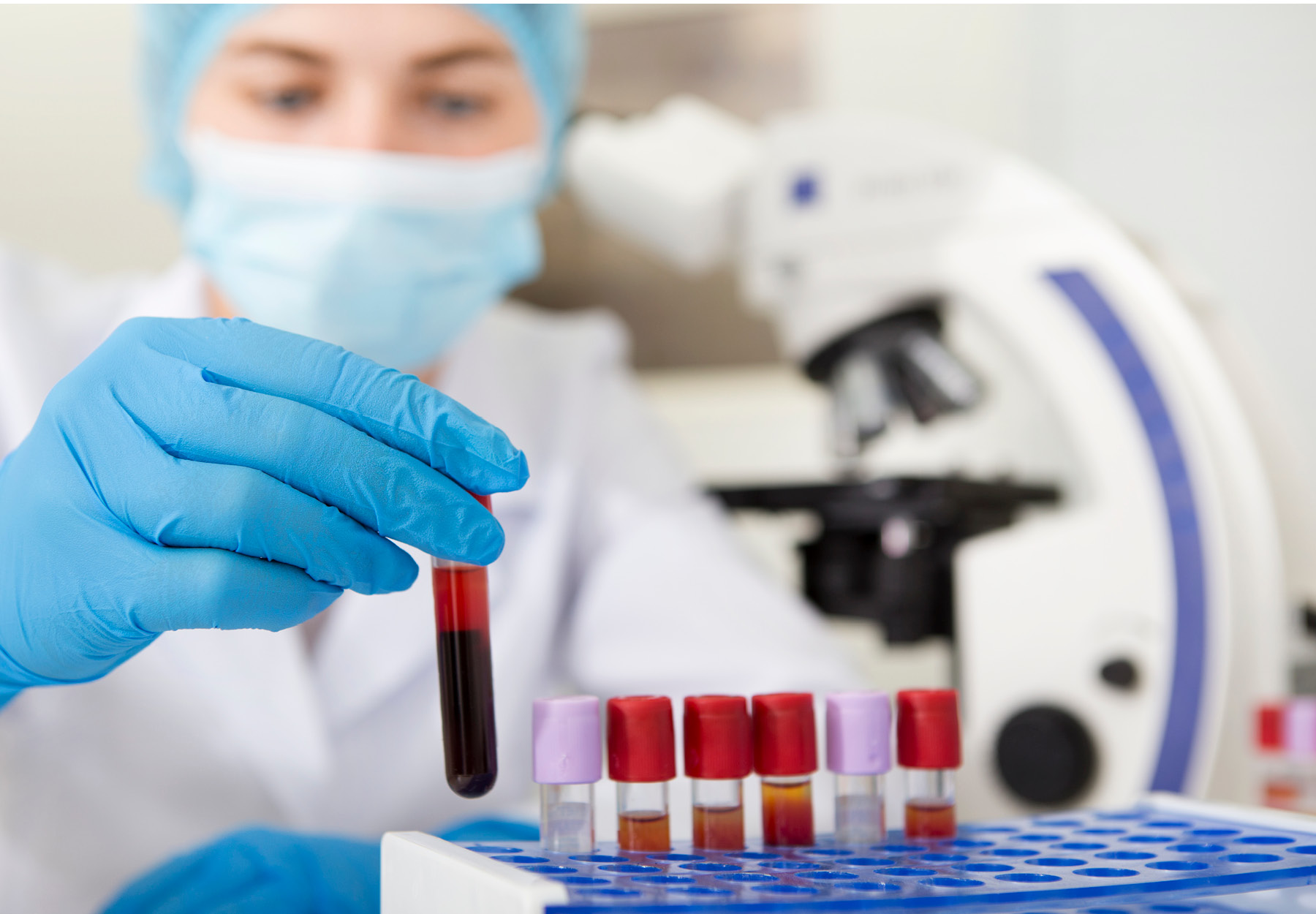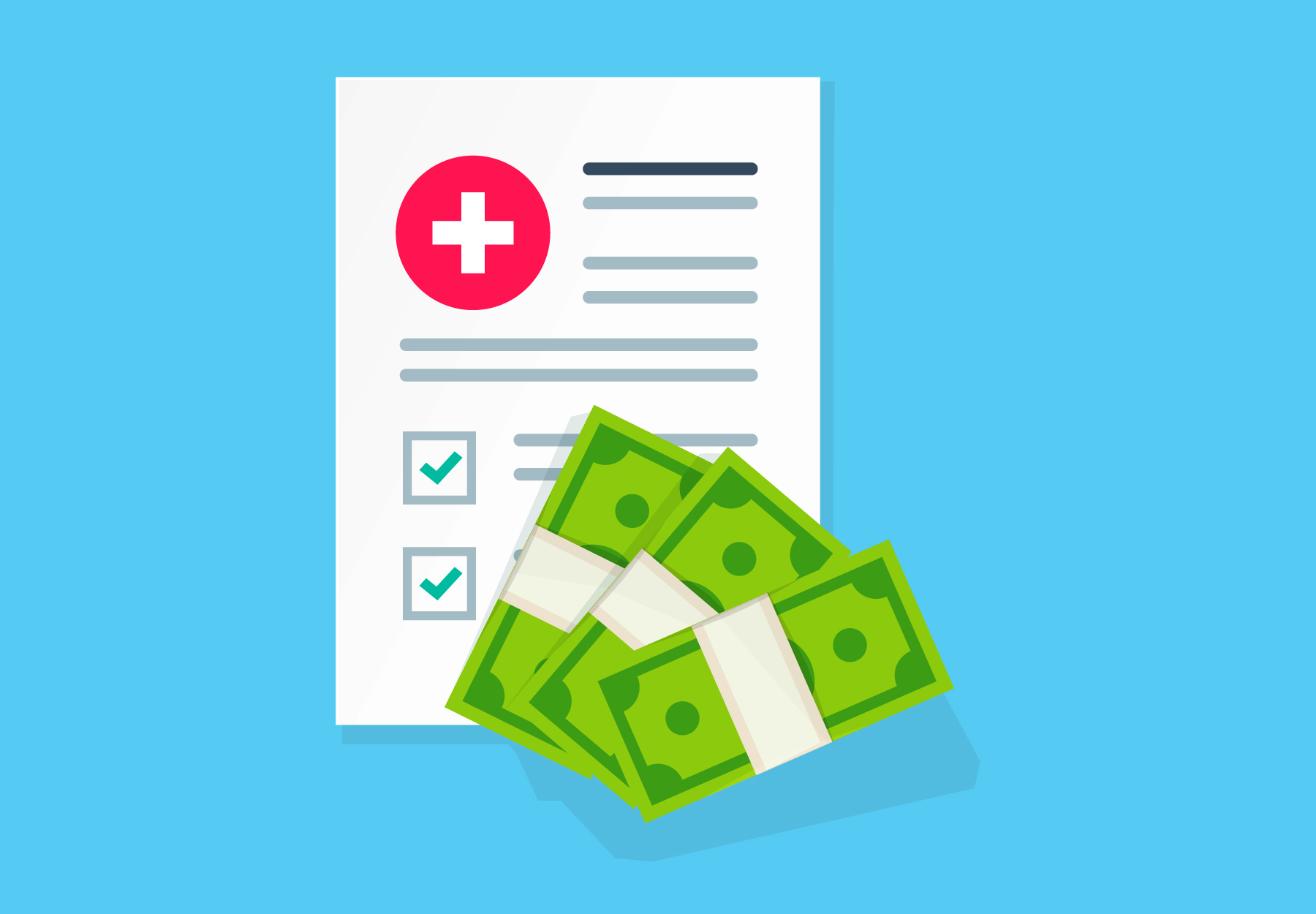The Year in Lab Compliance: The 6 Biggest Stories of 2022
The year was certainly an interesting one in terms of regulatory change in the medical laboratory space.

“May you live in interesting times.”
This supposed ancient Chinese curse might have special resonance for lab managers. If your job involves ensuring compliance, the last thing you want is for times to get “interesting.” After all, compliance is much simpler when the regulations governing billing, reimbursement, sales and marketing, health and safety, clinical quality, and other vital aspects of lab operations remain consistent, unchanging, and predictable. At the same time, regulatory change can be a welcome development when it impacts laws that are unreasonable, unfair, and oppressive. With this in mind, 2022 was a very “interesting” year. Here’s a briefing of the year’s biggest stories.
1. The Theranos Saga: Holmes & Balwani Face Justice

On Jan. 3, the first business day of the year, a federal jury in northern California convicted former Theranos owner and chief executive officer Elizabeth Holmes of four counts of fraud, each carrying a maximum prison sentence of 20 years. It’s fitting that the first major lab compliance story of 2022 should involve the most infamous lab scandal of all time. First exposed by The Wall Street Journal, the story of how Holmes’ reputed breakthrough lab-on-a-microchip technology suckered investors, journalists, and other high-profile individuals became a national parable of Silicon Valley corruption and greed and the stuff of Hollywood.
The Theranos retribution story would continue to unfold throughout the year. In March, it was former Theranos chief operating officer Ramesh “Sunny” Balwani’s turn to face the music when the trial for his role in the scandal kicked off in the same courtroom. While the Balwani trial received far less attention, it followed the same basic script, with Balwani blaming Holmes for everything that happened at Theranos, just as Holmes had sought to shift all responsibility to Balwani during her trial. But despite the role reversal, the ending was the same. In fact, Balwani fared even worse than his ex-lover, being found guilty on all 12 counts of wire fraud and conspiracy to commit wire fraud.
The next chapter unfolded in November when federal Judge Edward J. Davila sentenced Holmes to 135 months (slightly more than 11 years) in prison, followed by three years of supervised release. Holmes plans to appeal. Assuming she serves the entire sentence, she’ll be 52 when she’s released. Fittingly enough, just as it began, the 2022 lab compliance year closed with Theranos when Balwani was sentenced on Dec. 7 to 155 months (just shy of 13 years) in prison, also followed by three years of supervised release.
2. PAMA Pricing Pushback Continues—Oh, SALSA, Where Art Thou?

If the lab industry’s political agenda was on fire and only one item could be rescued, repeal of the Centers for Medicare & Medicaid Services’ (CMS’s) distorted Protecting Access to Medicare Act of 2014 (PAMA) market pricing scheme would probably be it. As in recent years, PAMA damage control and reform efforts were a crucial story of lab compliance in 2022.
On the former front, the lab industry was successful in getting Congress to once more delay the 15 percent PAMA cut in Part B reimbursements for Clinical Diagnostic Laboratory Tests (CDLTs) that were scheduled to take effect with the 2022 Clinical Laboratory Fee Schedule (CLFS). The legislation also delayed PAMA reporting. But the rearguard delay strategy seems to be played out and, barring last-minute Congressional action, the previously forestalled rate cuts and reporting obligations will take effect in January 2023.
Meanwhile, the frontal assault on the legal validity of the CMS 2016 Rule implementing PAMA market pricing, particularly its definition of an “applicable laboratory” whose price data counts in calculating market rates for lab tests, continued. On July 15, the American Clinical Laboratory Association (ACLA) which has led the fight, scored a legal victory when the federal D.C. Circuit Court ruled that the 2016 Rule is “arbitrary and capricious” because it doesn’t “reasonably explain” the agency's use of National Provider Identifier (NPI) numbers to identify lab revenue.1 The ruling echoes the conclusion reached by the influential and bipartisan Medicare Payment Advisory Commission (MedPAC) in a June 2021 report to Congress.
However, the exciting news came in June when Congress introduced a new bipartisan bill called the Saving Access to Laboratory Services Act (SALSA) requiring CMS to use a more statistically reliable representative sample of lab test prices to determine CLFS reimbursement rates. SALSA would also provide labs administrative relief by increasing the time between price reporting periods from three to four years.
Takeaway & Practical Impact: SALSA, which has been endorsed by ACLA, the American Association for Clinical Chemistry (AACC), and other lab groups, currently represents the best hope for salvation. However, its prospects for passage by the current lame-duck Congress remain uncertain. While passage would reduce Medicare cuts, it would also impose new and difficult price reporting challenges to hospital labs. Still, labs will need to pay close attention to SALSA in the weeks and maybe months ahead.
3. The LDTs Regulation Near Miss

Another major item on the lab industry agenda is FDA regulation of laboratory developed tests (LDTs). After more than a decade of frustration, it looked for a while like LDT legislation would finally be passed in 2022. But not everybody in the industry was thrilled with the actual bill that Congress proposed. And it turned out to be a moot point when that bill got scuttled as it was nearing the finish line to passage.
The FDA’s initial response to the COVID-19 pandemic exposed what labs have been contending for years, namely, that the agency’s makeshift method of regulating LDTs as an extension of its authority over medical devices stifles innovation and keeps badly needed new lab tests and diagnostics from reaching the market. COVID failures generated new momentum to fix the problem and impose some kind of orderly regulation. In 2020, the Trump administration actually stripped the FDA of regulatory authority over LDTs.
In May, the House of Representatives made a bold move to push reform by incorporating the Verifying Accurate Leading-edge IVCT Development Act (VALID) into the legislation that Congress had to pass by Sept. 30 to keep the FDA’s medical device user fee system running. The new VALID would have created a risk-based framework for in vitro clinical tests (IVCTs) by requiring premarket review for high-risk tests while allowing lower-risk tests to reach the market via a far less stringent technological certification process. Labs and test makers would have also been allowed to make changes to moderate-risk tests that reach the market without undergoing premarket review.
ACLA and major labs like Quest Diagnostics and Labcorp expressed strong support for the bill. But academic and other labs that actually develop LDTs protested that it was too stringent and financially onerous on smaller labs without the resources of the commercial lab giants. Others complained that the bill was being rushed to passage without the evaluation and debate that such a significant piece of reform legislation deserved.
Congress ended up passing a user fee bill without the VALID Act.2
Takeaway & Practical Impact: The new VALID Act was the closest the industry has come to securing the LDTs legislation it has so long sought. But the bill isn’t dead and may still be passed during the lame-duck session, along with other FDA reform legislation that proponents attached to the user fee bill in May in the hopes of fast passage, including:
- Reforms to the accelerated approval pathway for drugs and biologics that would make it easier and faster for the FDA to withdraw products whose clinical benefits aren’t timely verified after approval;
- New affirmative labeling requirements for drugs and biologics marketed under an accelerated approval;
- Express recognition that “real world evidence” may be used to support or augment the post-approval verification study;
- A mandate for HHS to create new requirements to enhance diversity in clinical trials;
- Allowing importation of prescription drugs from Canada;
- A pilot program allowing the FDA to perform unannounced drug inspections of sites outside the US; and
- Requirements that medical device developers include cybersecurity in their device design and include information about the product’s cybersecurity in premarket submissions.
4. The Surprise Billing Fiasco

On Jan. 1, new federal legislation designed to prevent patients from being hit with surprise medical bills took effect. But while it was successful in protecting patients (protecting over 9 million Americans from surprise bills, according to a report from the payor lobby group America’s Health Insurance Plans (AHIP) and Blue Cross Blue Shield), the No Surprises Act proved an unpleasant surprise to labs and other providers that furnish out-of-network services to patients with commercial health insurance.3,4
As with that other bane to lab reimbursement, the PAMA market pricing scheme, the problem with surprise billing wasn’t the legislation, but the regulatory rules for its implementation, specifically with regard to resolution of billing disputes between out-of-network providers and commercial health plans. Explanation: The act bans providers from billing commercially insured patients (surprise billing was already banned under Medicare and other federal healthcare program rules) for more than the in-network cost-sharing due under the patient’s insurance. But rather than stipulating a rate, it establishes a process for providers and plans to settle on the payment amount. The way it works:
- Plans provide the out-of-network provider initial payment or notice of denial within 30 days of the date of service
- If the provider is dissatisfied with the initial payment, it can call for a 30-day “open negotiation” process
- If the dispute is still unresolved, either side can call for use of a new independent dispute resolution (IDR), aka, “final offer” arbitration process, in which both parties submit their final payment offer and the arbitrator chooses which of the two is “reasonable.”5
The interim regulations list the factors the arbitrator must consider in deciding which final offer is more “reasonable,” starting with the “qualifying payment amount” (QPA), defined as essentially the insurer’s median in-network rate for similar services in the geographic region as of 2019, indexed for inflation by the Consumer Price Index for All Urban Consumers (CPI-U).
Not surprisingly, providers objected that assigning primary importance to the QPA effectively makes health plans the judge, jury, and executioner of “reasonable” payment under the IDR process. In February, a federal judge in Texas sided with the Texas Medical Association (TMA) in its surprise billing lawsuit by ruling that the IDR interim regulations violated the policies Congress intended to promote by adopting the act. The American Hospital Association (AHA) and American Medical Association (AMA) filed their own lawsuit challenging the IDR regulations.
In August, the Biden administration issued a revised final rule purporting to allay providers’ concerns.6 While it still lists QPA as the first factor in determining reasonableness, the final rule also says that once arbitrators consider the QPA, it’s “reasonable” for them to “then” look at “the additional, likely-qualitative factors, when determining the out-of-network rate.” Such factors include:
| Qualitative Factors for Determining Out-of-Network Rate During IDR Process The level of training, experience, and quality and outcomes measurements of the provider or facility that furnished the qualified IDR item or service (which we’ll refer to as “service”); The market share held by the provider or facility or that of the plan or issuer in the geographic region in which the service was provided; The acuity of the patient receiving the service, or the complexity of furnishing the service to the patient; The teaching status, case mix, and scope of services of the facility that furnished the service; and Demonstration of good faith efforts (or lack thereof) made by the provider or facility or the plan or issuer to enter into network agreements with each other, and, if applicable, contracted rates between the provider or facility, as applicable, and the plan or issuer, as applicable, during the previous four plan years. |
Practical Impact & Takeaway: The battle is a long way from over. Providers aren’t satisfied with the IDR revisions contained in the final rule and will continue to seek rollback of the rule making QPA the primary factor in determining reasonableness. Even though the AHA and AMA withdrew their lawsuit in September, they made it clear that they intend to keep an eye on the situation and take further actions to “make our voices heard in the courts very soon.”7 Meanwhile, Congressional leaders of the influential House Ways and Means Committee sent a letter to several federal agencies expressing their “severe disappointment” with the final rule, which they claim is still too one-sided in insurers’ favor. The letter asks the agencies to “swiftly revisit portions of the August 2022 final rule to ensure it aligns with the law as written.”8
5. The Telehealth Lab Fraud Crackdown

While telehealth fraud was on the radar screen of enforcers before, the dramatic increase in telehealth utilization during the COVID-19 public health emergency (PHE) assigned it a new urgency. This became abundantly clear in October 2020 when the U.S. Department of Justice (DOJ) announced Operation Rubber Stamp, a massive National Health Care Fraud Enforcement Action targeting telehealth scams. Many of these schemes involved kickbacks and false billing of cancer genetic (CGx) and cardiovascular lab tests.
Under the typical modus operandi, telehealth companies pay kickbacks “to aggressively recruit and reward” providers to order medically unnecessary services for what the OIG calls “purported patients” solicited by the telehealth company. In many cases, the provider has limited or even no interaction with purported patients. The telehealth company then sells the lab test order to third parties that fraudulently bill for the unnecessary services.
The feds maintained the pressure in 2022. On July 20, the DOJ revealed its newest mass enforcement action resulting in criminal charges against 36 defendants across 13 federal judicial districts in alleged telehealth fraud schemes involving over $1.2 billion in false claims. That very same day, the OIG issued a new Special Fraud Alert, its first in nearly two years, warning providers to steer clear of suspect telehealth arrangements.9
Takeaway & Practical Impact: Labs and physicians that enter into telehealth arrangements must be extra careful to avoid liability risks. An effective strategy is to be on the lookout for what the OIG Special Fraud Alert calls “suspect characteristics” or red flags before entering into an arrangement with a telehealth company:
- The purported patients for whom the provider orders lab tests are identified or recruited by a telehealth company, telemarketer, sales agent, recruiter, call center, health fair, and/or through internet, television, or social media advertising for free or low out-of-pocket cost items or services;
- The provider doesn’t have sufficient contact with or information from the purported patient to make a meaningful assessment of whether the ordered tests are medically necessary;
- The telehealth company compensates the provider based on the volume of lab tests ordered or medical records reviewed;
- The telehealth company only furnishes items and services to federal healthcare program beneficiaries and doesn’t accept insurance from any other payor;
- The telehealth company says it only furnishes items and services to individuals who aren’t federal healthcare program beneficiaries, but may in fact bill federal healthcare programs; and/or
- The telehealth company only furnishes one product or class of products, e.g., genetic testing, durable medical equipment, or diabetic supplies, potentially restricting the provider’s treating options to predetermined courses of treatment.
Any one of the suspect characteristics should be enough to raise your guard; the more you detect, the more hesitant you should be about entering into the arrangement.
6. The Evolution of Healthcare Equity from Ethical to Compliance Challenge

All providers, including labs, have an ethical obligation to work toward the goals of eliminating systemic racial, ethnic, and other disparities and ensuring equity in delivering healthcare services to the communities they serve. One of the biggest stories in lab compliance this year is how that objective has become a compliance mandate. In July, HHS issued a new proposed rule on Section 1557 of the Affordable Care Act (ACA), which bans health programs or facilities that receive federal funding from discriminating on the basis of race, color, national origin, sex, age, or disability. The proposed rule interprets the Section 1557 ban broadly as protecting groups and characteristics not expressly named in the ACA, including sexual orientation, gender identity, pregnancy-related conditions, and limited English proficiency.10
In addition to legal sanctions, failure to implement adequate measures to identify and eliminate healthcare disparities and inequities may affect a lab’s accreditation. CMS, the National Committee for Quality Assurance (NCQA), and the National Minority Quality Forum (NMQF) have all adopted health equity standards. In addition, new Joint Commission Standard LD 04.03.08 covering hospitals takes effect on Jan. 1.11
Takeaway & Practical Impact: To comply with the new interpretation of Section 1557, labs will have to broaden their HR nondiscrimination and anti-harassment policies to ensure protection for persons in those groups. Compliance with healthcare equity provisions of accreditation standards requires a different systemic approach to identify and eliminate disparities. While rules vary, there are 6 basic things your lab must do:
- Designate a health disparities officer to lead the effort to reduce disparities
- Assess patients’ health-related social needs, or “social determinants of health,” such as access to transportation, education, literacy, financial situation, and other factors that may affect their access to and the quality of lab services they receive
- Stratify your quality and safety data to account for patients’ sociodemographic features, which may include age, gender, preferred language, race, and ethnicity
- Implement a written action plan to eliminate some or all the disparities you identify
- Measure success and take follow-up action when failing to achieve or sustain the goal(s) in your action plan
- Provide an annual report to stakeholders documenting the progress you’ve made in eliminating disparities during the year.
References:
- https://casetext.com/case/am-clinical-lab-assn-v-becerra-1
- https://www.congress.gov/bill/117th-congress/house-bill/7667/text
- https://ahiporg-production.s3.amazonaws.com/documents/202211_1P_Surprise_Billing.pdf
- https://www.congress.gov/bill/116th-congress/house-bill/3630
- https://www.cms.gov/files/document/cms-9909-ifc-surprise-billing-disclaimer-50.pdf
- https://www.federalregister.gov/documents/2022/08/26/2022-18202/requirements-related-to-surprise-billing
- https://www.aha.org/news/headline/2022-09-20-aha-ama-move-dismiss-challenge-no-surprises-act-interim-final-rule-plan
- https://aha.org/system/files/media/file/2022/11/key-house-committee-express-serious-concerns-regarding-latest-efforts-to-implement-the-bipartisan-no-surprises-act-letter-11-21-22.pdf
- https://oig.hhs.gov/documents/root/1045/sfa-telefraud.pdf
- https://www.federalregister.gov/documents/2022/08/04/2022-16217/nondiscrimination-in-health-programs-and-activities
- https://www.jointcommission.org/-/media/tjc/documents/standards/prepublications/effective-2023/cah_jan2023_prepublication_report_reducing_health_care_disparities.pdf
Subscribe to view Essential
Start a Free Trial for immediate access to this article